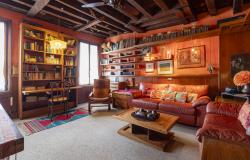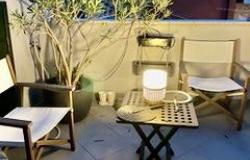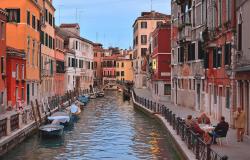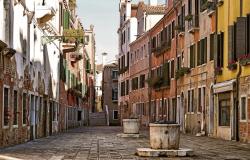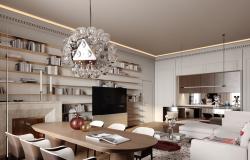 One of the masterpieces of Western art, Giotto's Scrovegni Chapel frescoes in Padua, is threatened by flooding and water seepage, an expert warned on Friday.
One of the masterpieces of Western art, Giotto's Scrovegni Chapel frescoes in Padua, is threatened by flooding and water seepage, an expert warned on Friday.
"All it took was two hours of rain on Thursday to flood the 'technological entry' to the site, compared to an entire day of rain last year," said architect Fernardo De Simone, referring to flooding in the three-chamber glass module through which visitors pass before entering the chapel.
"This is a really bad sign, showing that the ground around the chapel is so saturated with water that it can no longer normally absorb it," said De Simone, an expert in underground constructions.
The so-called 'technological entry' was installed seven years ago to counter the deterioration of the frescoes by pollution, dust and humidity caused by the breathing of an estimated 350,000 people who cram into the Chapel to admire the work each year.
Since then, only 25 visitors at a time are allowed in. They must spend some 15 minutes in the first chamber while it reduces pollutants they may be carrying and purifies the air. They then move into a second chamber before finally being admitted inside the chapel.
Visitors leave through the second and third chamber after spending no longer than 30 minutes inside admiring the watershed work.
De Simone said he also feared that a new underground auditorium being built near the Scrovegni would cause even more seepage problems by redirecting underground water from Padua's Piovego canal.
"The waterproofing on the (auditorium) walls will act as a sort of dam which will deviate any underground water seeping from the (neighbouring) Piovego canal. Now, seepage from the canal's waters are evenly distributed on both banks. But the new construction will increase seepage towards the Scrovegni side and really create serious risks for Giotto's masterpiece".
The Scrovegni Chapel reopened to the public in March 2002 following an eight-month, 1.9-million-euro restoration of the fresco to halt damage caused by pollution and too many visitors.
Giotto (c.1266-1337) was commissioned by a local nobleman, Enrico degli Scrovegni, to decorate the chapel in early 1303.
He handed over his marvelous cycle of scenes from the Bible, bound together by a starry heaven, on March 25, 1303. Most of the frescos depict Christian redemption through the lives of Jesus and Mary.
Scrovegni, who is mentioned in Dante's Inferno, built the chapel in expiation for his father's usury.
The frescoes have been universally recognised as the work of an artist at the height of his powers. Art students come to Padua to understand Giotto's influence on the whole of subsequent Italian painting.
photo: restoration work on the fresco depicting Judas kissing Jesus.
